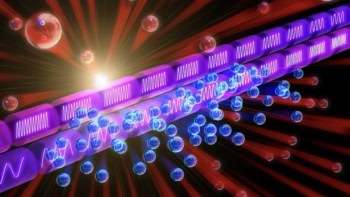
Nuclear physicists in France have invented a way to authenticate the vintage of rare wine without needing a sommelier’s keen nose or even a corkscrew. The technique, which involves firing high-energy protons at wine bottles, can determine how old the bottles are and even where they come from. The new method could help unmask counterfeit wines — a growing problem in the wine industry, where a bottle can sell for thousands of Euros.
Hervé Guégan and colleagues at the Centre d’Etudes Nucléaires in Bordeaux Gradigan (CENBG) bombard wine bottles with a 3 MeV proton beam produced by the AIFIRA particle accelerator. They then determine the chemical composition of the glass through an analysis of X-rays emitted by 15 different elements in the material (including silicon, sodium, iron and magnesium). Finally, Guégan’s team compare the chemical make-up of the glass with that of 80 other bottles of known origin studied by the researchers. These bottles, which date from 1859 to the present day, come from private collections and museums in the Bordeaux region of southwest France.
Good year or bad?
Thanks to improvements in processing, the chemical composition of glass has changed over the last 100 years. Hence, a bottle’s chemical “signature” depends on where and by whom the glass was produced. These year-on-year changes mean that bottles from a “good” year for wine can be distinguished from a “bad” one. “The technique as it stands is accurate to about 15 years, but we hope to improve this precision to one or two years when the database is extended,” Guégan told Physics World.
A previous technique developed at the CENBG by Philippe Hubert and colleagues dated the wine itself by measuring the amount of caesium-137 — a radioactive isotope produced during atomic-bomb tests — the wine contained. But the bottles had to be opened and the wine destroyed to achieve reliable results and the technique could not date wines produced before bomb tests began.
However, the caesium-137 test might be combined with the new technique to dissuade unscrupulous people from filling authentic old bottles with newer wine. The team now hopes to extend its database to 160 bottles with the help of the Antique Wine Company, a London-based rare-wine merchant, which has agreed to finance future research on the technique in exchange for an exclusive 10-year agreement with the CENBG group to unearth counterfeit wines.
Once the procedure becomes fully operational next year, an independent offshoot of Antique Wine, VinCert, will take over from Guégan’s team at the CENBG.



